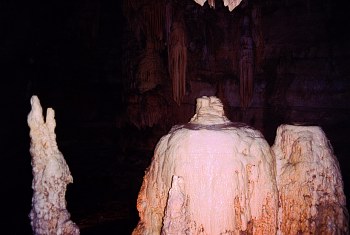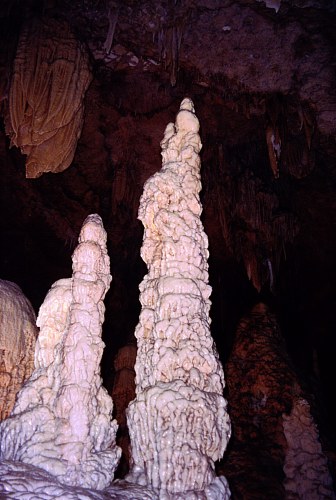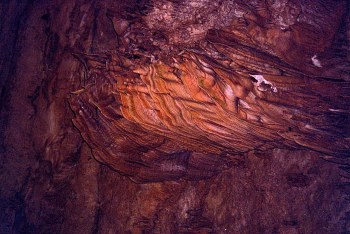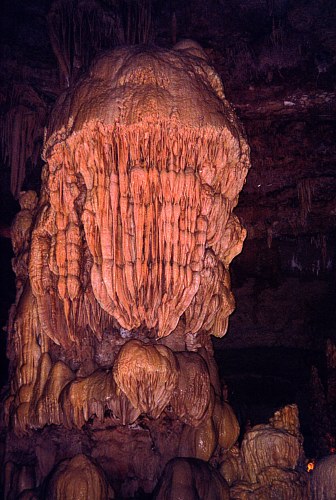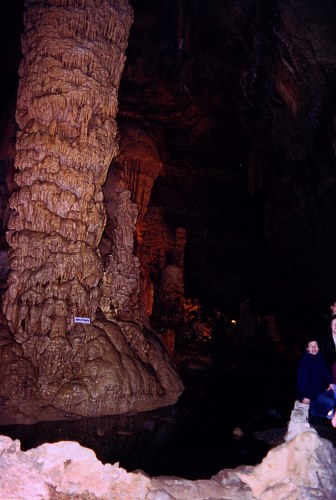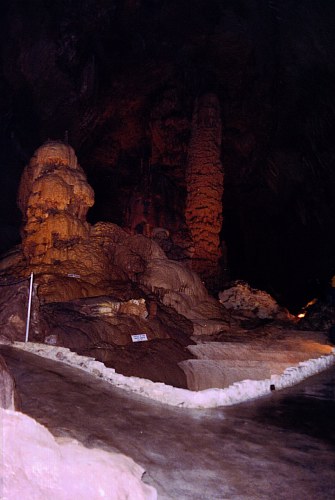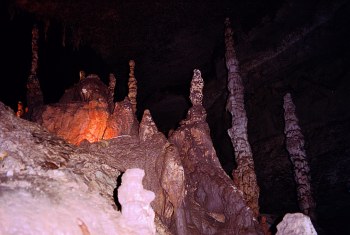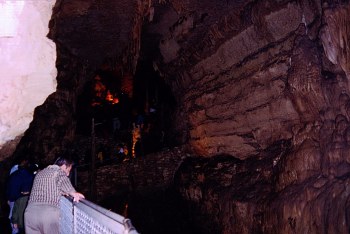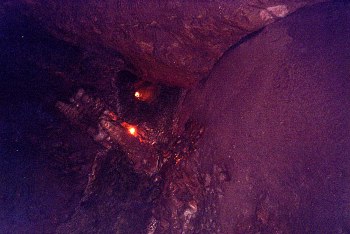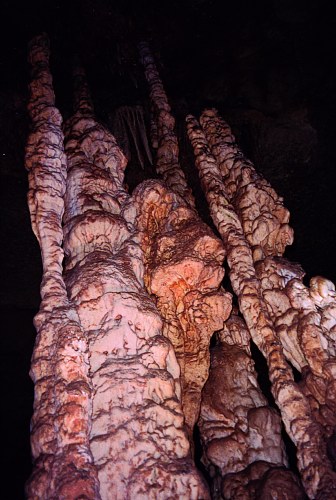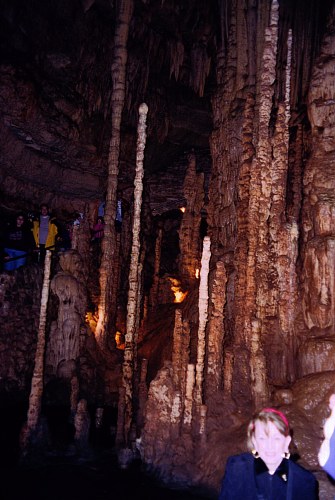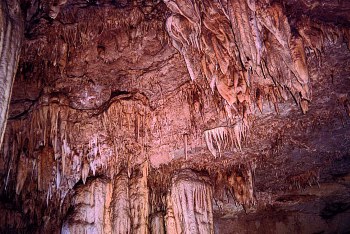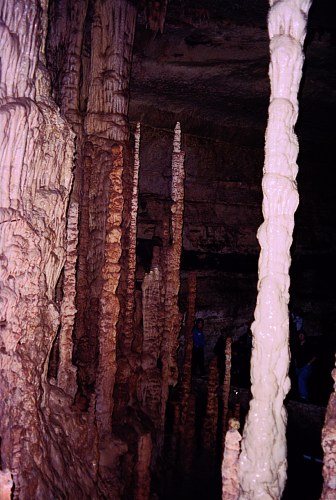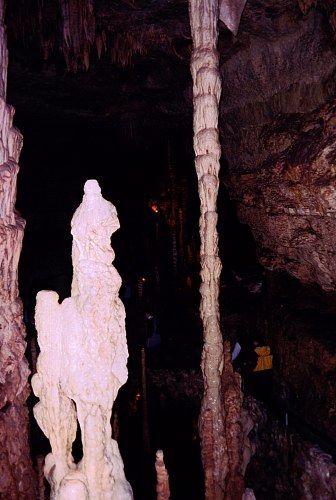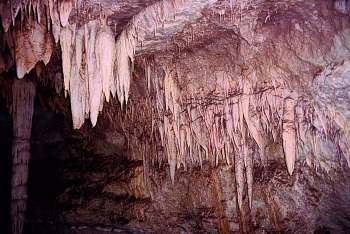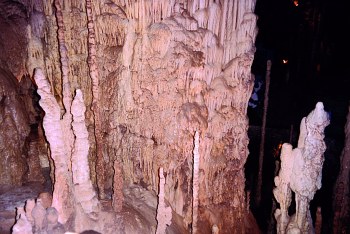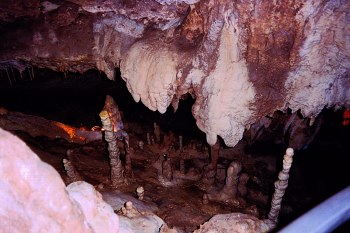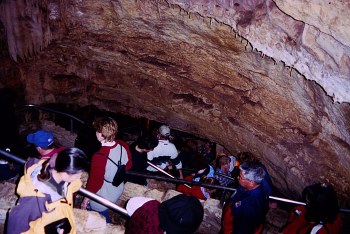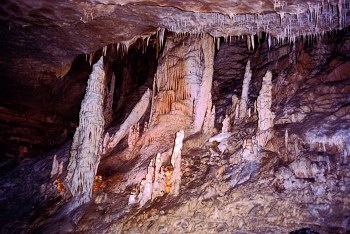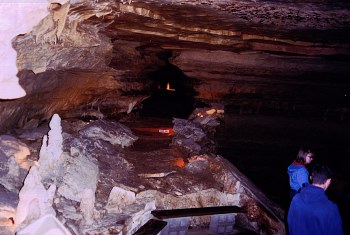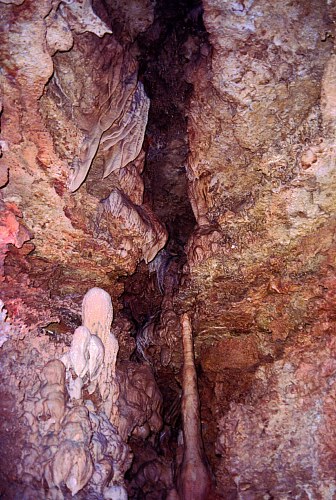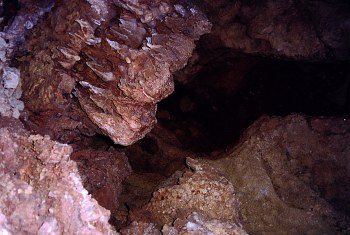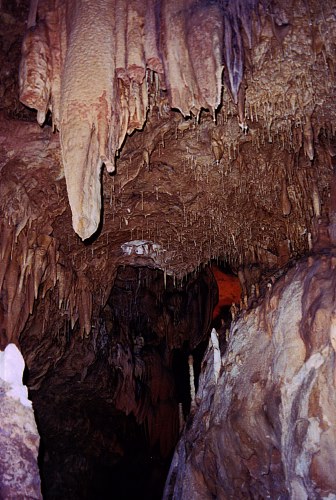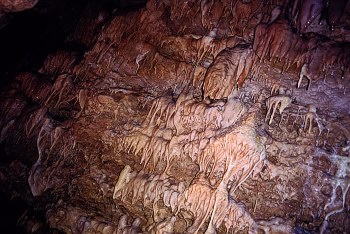Cats & Friends | home
Our Cats, Members Of The Family | Bob's Friend's & Fun Stuff | San Antonio Missions | Natural Bridge Caverns
Natural Bridge Caverns
Before entering the cavern, let's first look around at the cavern entrance. Geologists refer to this area as a sinkhole. At one time, this was the largest and uppermost room of the cavern. Roughly 5,000 years ago, erosion from both above and below the ground weakened the ceiling to the point of collapse. The result is the depression you're standing in and the incredible 60 ft. Natural Bridge of limestone from which the cavern gets its name.
|
||
The Bear Pit
The Bear Pit is the first room of the caverns. It gets its name because explorers found an 8,000-year-old jawbone of a black bear here during the initial excavation. The remains of 45 other vertebrates were also discovered in the caverns. As you continue down the trail, to the lower right you will see Discovery Entrance. This narrow crawl way was once the only entrance to Natural Bridge Caverns. As you continue, you will pass through one of the three man-made passages blasted out of the rock to connect portions of the caverns.
|
||
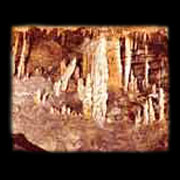 |
Pluto's Anteroom
This is the first large room that was discovered in Natural Bridge Caverns. As you enter this room, you will see Discovery Crawl way again to your right. Pluto's Anteroom is over 108 feet below the surface and contains many different limestone formations you will see throughout the caverns.
|
|
Sherwood Forest
You are now 180 feet below the surface. Sherwood Forest is named for the tall stalagmites, flow stone and columns that resemble trees. These formations are unique because they are unusually slender for their height. Some are only a few inches in diameter.
|
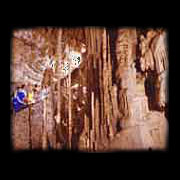 |
|
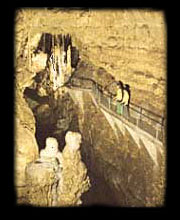 |
Purgatory Creek
Looking down, you will see the deepest point on tour. Purgatory Creek is 211 feet below the surface. The explorers had to walk through the mud at the bottom in order to reach the next room. We will cross about 30 feet above the floor of Purgatory Creek on this incredible 152 foot long bridge. The cavern developers constructed this bridge in one continuous piece to avoid any gaps that could shift or weaken over time.
|
|
Castle of the White Giants
This room is the second largest room on your tour today. It is 50 feet wide, 50 feet high, and 250 feet long. The Castle of the White Giants contains the largest formations in Natural Bridge Caverns. The spectacular column called the Watchtower spans the 50 foot height of the room. The Mount of the Landlord is the largest stalagmite in the caverns. The King's Throne resembles a huge ornate chair draped with curtains. Beautiful formations called chandeliers hang from the ceilings and walls of this room. The crystal clear water you see in the pools here appears to be green due to light refraction beneath the surface of the water. .
|
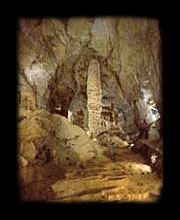 |
|
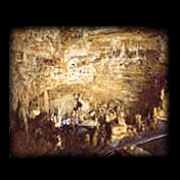 |
Hall of the Mountain King
Welcome to the largest room in Natural Bridge Caverns! Nearly the size of a football field, the Hall of the Mountain King is over 100 feet wide, 100 feet tall, and 350 feet in length. From here, you can look 72 feet down into Grendel's Canyon, which stretches all the way back to the Castle of the White Giants. Geologists refer to the Hall of the Mountain King as a breakout dome. Several joints in the rocks above intersected in this room, creating a weak area. Eventually, the rocks collapsed in layers, starting from the bottom, resulting in the domed shape of this room.
|
|
Fried Egg Stalagmites
Water had to drip very slowly to form these unique stalagmites. The water deposited most of its calcite content in the center of the formation to form a dense, dark yellow calcite crystal. The calcite deposited on the outer edge is less dense and appears white. As you near the end of your tour and make your way out of the caverns, you will see a red light that indicates where the undeveloped portion of the North Cavern continues. An underground river located 1.5 miles beyond the red light supplies water for the Visitors' Center.
|
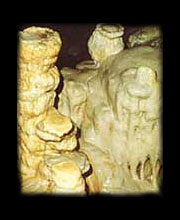 |
|
And Now, Our pictures from the adventure!
